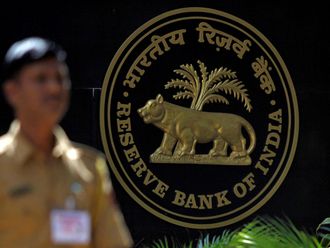Amidst fears of nuclear contamination in Japan, the aggressive multilateral counter-offensive against the armies of Muammar Gaddafi and the jamboree of World Cup cricket, a relatively staid news item pertaining to the US economy largely slipped by unnoticed except by Wall Street.
The United States reported a decline in applications for unemployment insurance by nearly 6,000.
In March, the US non-farm payroll employment increased by 216,000 new jobs. In the small business sector, according to Bloomberg, companies like Paychex which process payroll for firms with less than 100 workers, reported that it had been issuing 2.8 per cent more checks per client.
The employment to population ratio, as reported by Goldman Sachs, rose from 58.4 per cent to 58.5 per cent. The overall evidence then, points to a turnaround in the US labour market.
Cautious optimism
Seemingly then, there is a cautious optimism that the economy might be bouncing back from the rock bottom it hit in 2010.
Yet, the stark reality is that the job market is still terrible for millions with pernicious social consequences. Claims of black people being discriminated against in job searches are on the rise.
It is useful to realise how deep in the hole is the US economy. Assuming a growth in labour force of 90,000 per month as the Congressional Budget Office's estimates, the US economy will have to create around 245,000 jobs per month until Obama's second term in 2016, to arrive at the employment levels of 2007! But still, we tell ourselves the good news can't be forgotten.
The turnaround in the labour markets might lead us to believe that the Federal Reserve and President Obama might indeed have averted the screech and halt of many sectors of the economy.
That may indeed be so, but closer inspection reveals that things are less clear. They may have averted one disaster in exchange for a bigger one down the road.
The executive and the central bank have tacitly put in place an aggressive monetisation scheme of the debt issued by US government with a helping hand by big banks.
Thus not only they have increased the public debt but the debt has been paid for by monies created by the Fed out of ether. Inflation hawks and the US dollar bulls have begun to worry.
The financing of democracies works in mysterious ways. This mystery emerges from the fact that while we may study individual players and their incentives — the central bankers, the legislative and the executive bodies — and if we are unnaturally perspicacious, perhaps we may even understand how they interact with other pieces.
But no one really knows how all the pieces interact simultaneously with each other. It is this fallibility that the Obama administration, like all previous governments, has carefully exploited.
Terrible scourge
Historically, the consequence of rising public debt has had detractors and agnostics. David Ricardo, the patron saint of modern international trade theory, wrote that national debt was "one of the most terrible scourges… ever invented to afflict a nation."
Adam Smith argued that rising public debt ate into the ability of the economy to create capital.
On the other side of the ledger, in 1781 Alexander Hamilton — the fountainhead of American public finance — argued "a national debt, if it is not excessive, will be to us a national blessing. It will be a powerful cement."
None of these ancient masters of monetary economics could have seen the scale of the monetisation of debt that has followed.
It seems inevitable that they would have all condemned this seeming profligacy.
The columnist works for a major European investment bank in New York City. All opinions are personal and don't reflect any institutional perspectives.












